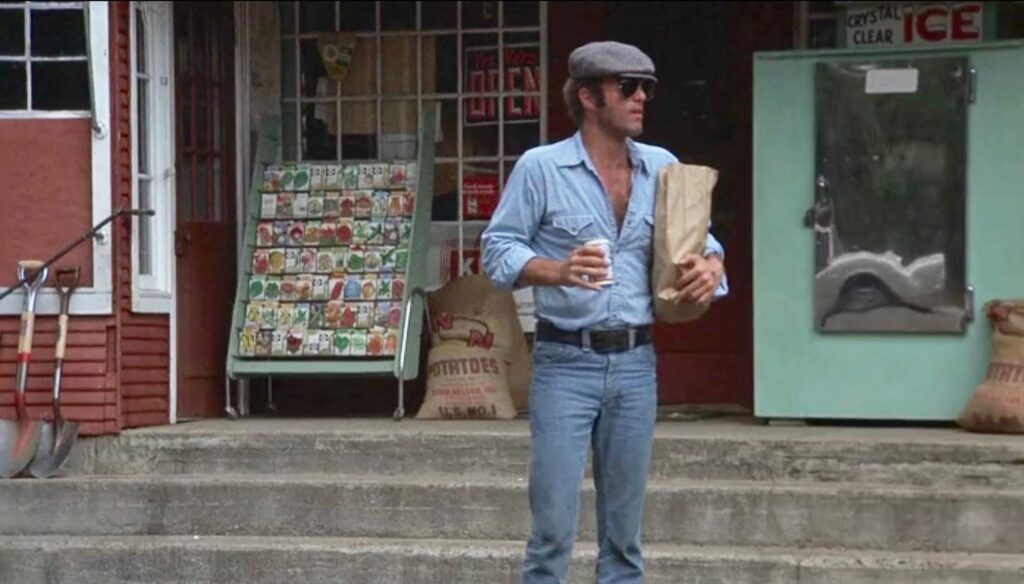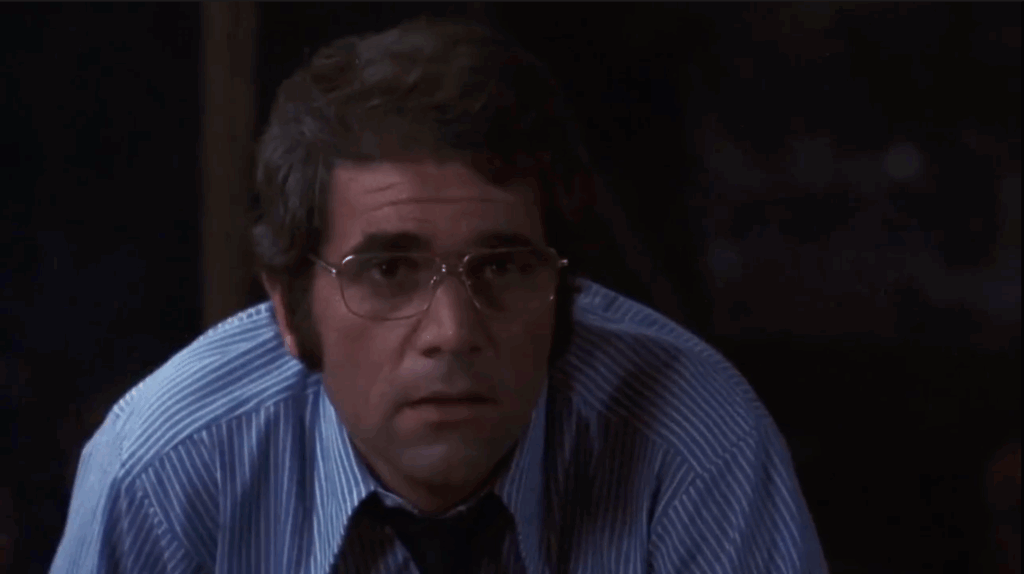| Reid Lemker |

Slither plays at the Trylon Cinema from Friday, May 30th, through Sunday, June 1st. For tickets, showtimes, and other series information, visit trylon.org.
Let’s play a game. I am thinking of a movie…It has a bit of action, some guns, a bit of drama, and a dash of comedy.
This movie I am thinking of came out in the early 1970s and stars James Caan.
Our hero is pitted against a gang of bad guys, one of them wears glasses and is played by Alex Rocco.
Have a guess?
Why, it’s Slither of course…what were you thinking of?
Howard Zieff’s 1973 film Slither is best described as a buddy, road, action, thriller, comedy. The film brings Caan and Rocco together, sandwiched between The Godfather’s release a year before and The Godfather Part II, which would come out a year later. I won’t waste my time (or yours) describing the plot of Slither because the plot isn’t really the point. It’s been aptly described in the past as more of a collection of events happening to James Caan’s character Dick Kanipsia than a logical plot. Sure, there is some embezzled money and some people trying to find it; Dick Kanipsia is joined by an odd ball crew of characters including Kitty Kopetzky (Sally Kellerman), Barry Fenaka (Peter Boyle), a big fan of RVs, and his wife Mary (Louise Lasser). There are, of course bad guys trying to stop them, some car chases, and a couple of bloody action sequences to tie things together. But Slither’s real charm is the way that the plot meanders along, never in too much of a hurry to go anywhere and not always clear about where it is headed next. The best explanation for the title Slither is that it aptly describes the twisting plot. As a viewer, you may find yourself a little confused at times, but you’re never too upset about it because hanging out with James Caan is always a good time.

It’s a film that eludes categorization. The outfits, quirkiness, music, and spurts of extreme violence make the film feel distinctly 70s to me, but I was born 15 years after the 70s ended so take that for what it’s worth. Beyond that, I have found it hard to come up with films that feel like Slither. At some moments, it reminds me of an arthouse road movie in the spirit of Pierrot Le Fou. At other times, I’ve thought of Slither as a silly Wes Anderson movie. Sometimes the mixture of quirkiness and extreme violence reminds me a bit of Fargo, butnone of these lenses feel especially good to me—they all feel too serious. Pierret Le Fou, an Anderson movie like Moonrise Kingdom, and even Fargo, though they all straddle the line between comedy, action, and romance narratives, all feel like they have something to say. They have a point to make. Slither, on the other hand, doesn’t have anything to say. Slither is just here for a good time.
What I have come to love and respect about Slither is the way it chooses to be kooky at every turn. Before the opening credits roll, we have a character choosing to blow themselves up with dynamite. When Dick leaves the scene he hitches a ride with Kitty, which appears to be a pretty standard meet cute until Dick stumbles upon Kitty robbing a cafe with a gun. Later, our kooky heroes embark on their journey in an Airstream instead of a sleek, fast car. They are not chased by speeding cars but by big black RV-style vans. One of the biggest action sequences in the second half of the film takes place at an RV park bingo game, where Dick catches his attackers with a cartoonish fake leaving gimmick and Kitty helps them escape by starting a brawl because she knocked off the bingo markers of a fellow player. Even in the final moments, the film swerves in ways that foreground the silly instead of the logical. It’s as if director Howard Zieff is constantly asking, “what’s the wildest action a character can take to achieve the desired outcome?”
The charm of Slither is that it always chooses kooky over logical. I respect its commitment to the bit. Beyond that, it’s a lot of fun to watch another 1970s film that stars James Caan in conflict with Alex Rocco. I like to try and imagine them chatting about the future box office success of The Godfather Part II while on the set of Slither. Or maybe (spoiler alert for the most famous film of all time) they both lamented their minimal roles in the upcoming Godfather sequel? They both had to have observed that the current film they were working on was a little bit different than the last film they had both worked on. Godfather, it is not, but Slither is still an amusing and enjoyable romp of a film.
Edited by Olga Tchepikova-Treon
